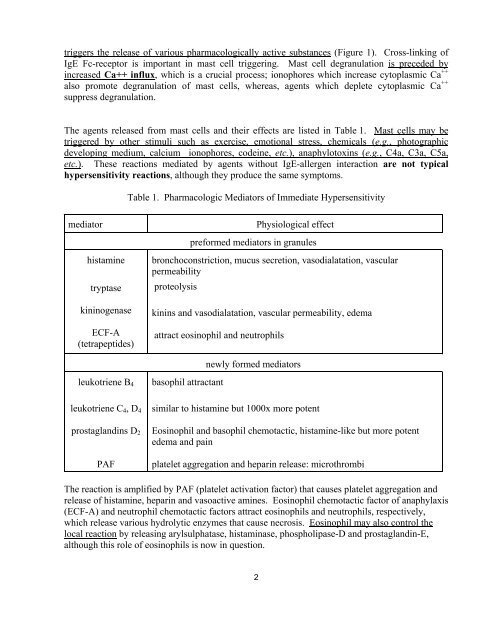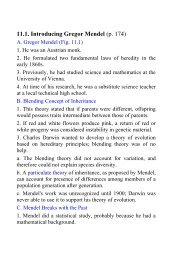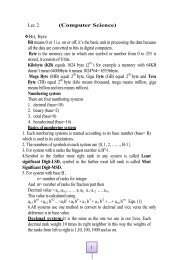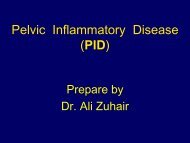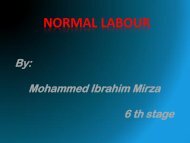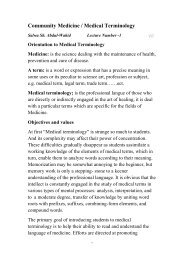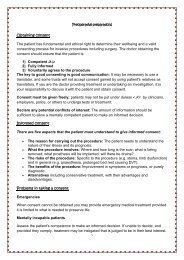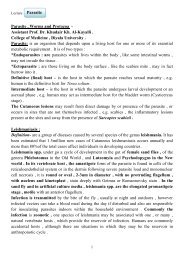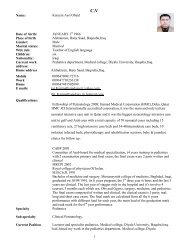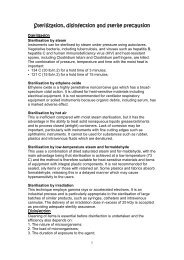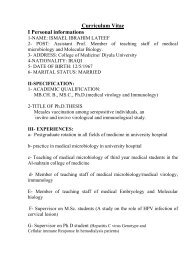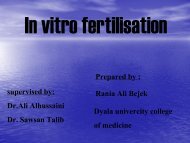Hypersensitivity reactions
Hypersensitivity reactions
Hypersensitivity reactions
- No tags were found...
You also want an ePaper? Increase the reach of your titles
YUMPU automatically turns print PDFs into web optimized ePapers that Google loves.
triggers the release of various pharmacologically active substances (Figure 1). Cross-linking ofIgE Fc-receptor is important in mast cell triggering. Mast cell degranulation is preceded byincreased Ca++ influx, which is a crucial process; ionophores which increase cytoplasmic Ca ++also promote degranulation of mast cells, whereas, agents which deplete cytoplasmic Ca ++suppress degranulation.The agents released from mast cells and their effects are listed in Table 1. Mast cells may betriggered by other stimuli such as exercise, emotional stress, chemicals (e.g., photographicdeveloping medium, calcium ionophores, codeine, etc.), anaphylotoxins (e.g., C4a, C3a, C5a,etc.). These <strong>reactions</strong> mediated by agents without IgE-allergen interaction are not typicalhypersensitivity <strong>reactions</strong>, although they produce the same symptoms.Table 1. Pharmacologic Mediators of Immediate <strong>Hypersensitivity</strong>mediatorhistaminetryptasekininogenaseECF-A(tetrapeptides)Physiological effectpreformed mediators in granulesbronchoconstriction, mucus secretion, vasodialatation, vascularpermeabilityproteolysiskinins and vasodialatation, vascular permeability, edemaattract eosinophil and neutrophilsnewly formed mediatorsleukotriene B 4leukotriene C 4 , D 4prostaglandins D 2PAFbasophil attractantsimilar to histamine but 1000x more potentEosinophil and basophil chemotactic, histamine-like but more potentedema and painplatelet aggregation and heparin release: microthrombiThe reaction is amplified by PAF (platelet activation factor) that causes platelet aggregation andrelease of histamine, heparin and vasoactive amines. Eosinophil chemotactic factor of anaphylaxis(ECF-A) and neutrophil chemotactic factors attract eosinophils and neutrophils, respectively,which release various hydrolytic enzymes that cause necrosis. Eosinophil may also control thelocal reaction by releasing arylsulphatase, histaminase, phospholipase-D and prostaglandin-E,although this role of eosinophils is now in question.2


